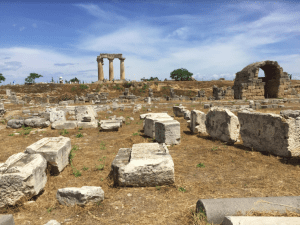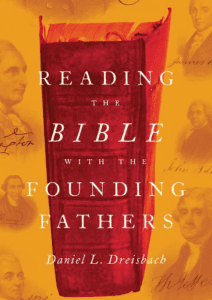 Defending the City of God: A Medieval Queen, the First Crusades, and the Quest for Peace in Jerusalem by Sharan Newman. NY: Palgrave Macmillan, 2014.
Defending the City of God: A Medieval Queen, the First Crusades, and the Quest for Peace in Jerusalem by Sharan Newman. NY: Palgrave Macmillan, 2014.
Review by Lynn Cohick, professor of New Testament at Wheaton College, and author of Philippians in the Story of God Bible Commentary.
An academic tour of the Holy Sepulcher this summer by a German scholar whose PhD work is in the early centuries of Christianity, and who has lived in Jerusalem for more than two decades renewed an interest in mine of medieval Western Christianity. On one point, however, I felt an abrupt disconnect – our guide spoke about the Crusades in unapologetically positive tones. How could this be? Were not the Crusades the supreme example of Western hubris and empire building? Or were they an attempt to re-gain Jerusalem and other holy places for the Latin West? One could answer “yes” to both questions, and still not cover the many reasons for the 200 years of Western/Latin Christians’ interest in controlling what was once part of the Constantine’s Christian Empire.
My questions gave me an excuse to read Sharan Newman’s new book about on the first crusades. Newman did doctoral work in Medieval Studies at UC Santa Barbara, and went on to author a number of historical and mystery novels. In her new book, Defending the City of God, she explores the first 100 years of the Crusades, tracing the major impetuses for the First Crusade and the major Christian and Muslim players whose alliances and battles re-made the political landscape. Newman’s primary focus, however, is not on battles but on personalities, even more specifically on one family from which was born the first queen of Jerusalem. She concentrated on Queen Melisende of Jerusalem – not a household name, at least in my home.
Newman is a careful historian, staying close to the evidence and exploring possible reconstructions where details are lacking. The main characters of Queen Melisende’s family slowly come to life as Newman leads the reader through the streets of the queen’s hometown, Edessa, and her ultimate domain, Jerusalem. In tracing events in her life (she was probably born in 1105), and those of her parents and sisters – the Middle East in the 12th century grew clearer to me. And by that I mean that I now see more clearly what a total mess it was – Christians East and West still at odds with each other, and Christians from different parts of the West failing to work together. Muslims caught in their own power plays, as Shi’ite Fatimids from Egypt, the Seljuk Turks from the North, and Sunni Arabs fight for ultimate control of the region. Cities like Aleppo, Damascus, Antioch, and Edessa are prizes pursued by all. At times, Christians joined with Muslims against other Christians or Muslims. Kidnapping and ransom demands were the order of the day, and family loyalty demanded the money be paid…eventually. Newman rightly notes that pilgrims carried their fervent faith to the holy places, but she places more emphasis on the rulers, knights, and soldiers whose goals are decidedly focused on more earthly rewards. Newman’s book helped me appreciate the roots of our modern complexities within the Middle East.
Not only does Defending the City of God inform the reader about the First Crusade, it also engages in the difficult task of writing about women of the past. Ancient chroniclers were more interested in generals and their battles, or kings and their territories. Moreover, these historians drew on biased tropes of women as unfaithful and devious, often sidelining or minimizing their positive influence. Newman does a good job of sifting the evidence to suggest that Melisende led Jerusalem as a proper queen; she was direct heir to the throne. A contemporary example is Queen Elizabeth II of England, who rules as heir of her father, King George VI. When Melisende’s husband died, Bernard of Clairvaux wrote a letter of sympathy to her and Newman emphasizes this line, “the eyes of all will be upon you, and on you alone the whole burden of the kingdom will rest. You must set you hand to great things and, though a woman, you must act as a man… so that all may judge you from your actions to be a king rather than a queen,” (page 176). He clearly had every confidence in her human capabilities, but to express those, his culture shaped and restricted him to using male/masculine language to encourage her to greatness. Yet modern historians fail to take Melisende’s stature at face value and instead insinuate that she was power hungry. This label comes from the fact that she acted as sole ruler for five years after her son, Baldwin III, came of age. Newman points out that her son had humiliating defeats on the battlefield early on, and that probably at least some nobles of her day felt he was not ready for prime time.
Newman’s Defending the City of God puts the First Crusade, and the “first family” of Jerusalem within its cultural context. She brings to light the complex intersections of cultures and languages encountered by these first Crusaders. Having myself just been immersed in the polyglot culture of Jerusalem, I could relate a bit to the situation sketched by Newman. She speaks of Melisende’s father, the Frenchman Baldwin of Le Bourq, who married Morfia, from Edessa. This city had ancient Christian roots, and was populated by Turkish and Arab Muslims as well as Syrian and Armenian Christians. Morfia spoke Armenian, but was raised Greek Orthodox, while many in Edessa were Armenian Christians. She and Melisende likely knew Arabic, spoken by the Syrian Christians and Arab Muslims. Newman reminds us that in her diet and dress, her language and culture, Melisende was a citizen of the Near East.
As queen of Jerusalem, Melisende could communicate with the Latin/Western Christians in her father’s French, to the Armenian Christians in her mother’s native tongue, as well as the Arabic speaking Muslims and Syrian Christians. Newman notes that an Arab traveler from Spain making his way to Mecca commented that the farmers in the villages around Jerusalem seemed content with their Frankish (Crusader) overlords. Those farmers were Syrian Muslims and Christians, who shared their crops equally and allowed their animals to mingle, even though their towns were divided into Muslim and Christian halves. Melisende issued a charter in 1150 that names certain farmers, both Muslim and Syrian Christian, who lived close together and paid taxes to the queen (page 96-7). This picture of Jerusalem and its surrounding area made me feel both hopeful and hopeless at the same time: hopeful that the unity and friendships that existed once in small communities might happen again; and hopeless given the turmoil and tragedies daily experienced by Muslims and Christians in these lands.











